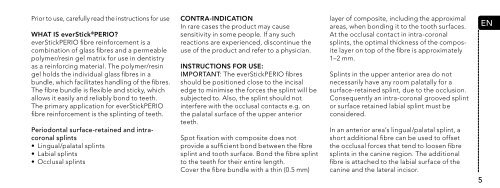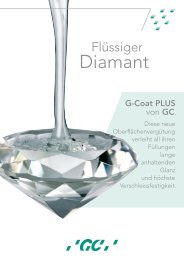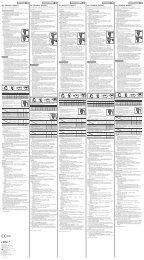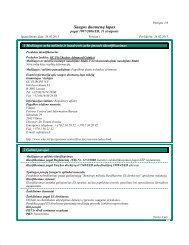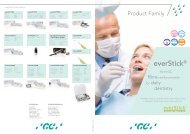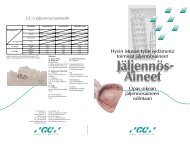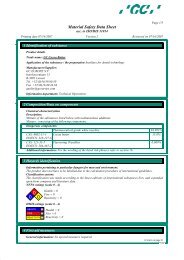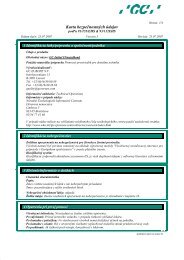everStick®Perio everStick®Perio - GC Europe
everStick®Perio everStick®Perio - GC Europe
everStick®Perio everStick®Perio - GC Europe
Create successful ePaper yourself
Turn your PDF publications into a flip-book with our unique Google optimized e-Paper software.
Prior to use, carefully read the instructions for use<br />
WHAT IS everStick ® PERIO?<br />
everStickPERIO fibre reinforcement is a<br />
combination of glass fibres and a permeable<br />
polymer/resin gel matrix for use in dentistry<br />
as a reinforcing material. The polymer/resin<br />
gel holds the individual glass fibres in a<br />
bundle, which facilitates handling of the fibres.<br />
The fibre bundle is flexible and sticky, which<br />
allows it easily and reliably bond to teeth.<br />
The primary application for everStickPERIO<br />
fibre reinforcement is the splinting of teeth.<br />
Periodontal surface-retained and intracoronal<br />
splints<br />
• Lingual/palatal splints<br />
• Labial splints<br />
• Occlusal splints<br />
CONTRA-INDICATION<br />
In rare cases the product may cause<br />
sensitivity in some people. If any such<br />
reactions are experienced, discontinue the<br />
use of the product and refer to a physician.<br />
INSTRUCTIONS FOR USE:<br />
IMPORTANT: The everStickPERIO fibres<br />
should be positioned close to the incisal<br />
edge to minimise the forces the splint will be<br />
subjected to. Also, the splint should not<br />
interfere with the occlusal contacts e.g. on<br />
the palatal surface of the upper anterior<br />
teeth.<br />
Spot fixation with composite does not<br />
provide a sufficient bond between the fibre<br />
splint and tooth surface. Bond the fibre splint<br />
to the teeth for their entire length.<br />
Cover the fibre bundle with a thin (0.5 mm)<br />
layer of composite, including the approximal<br />
areas, when bonding it to the tooth surfaces.<br />
At the occlusal contact in intra-coronal<br />
splints, the optimal thickness of the composite<br />
layer on top of the fibre is approximately<br />
1–2 mm.<br />
Splints in the upper anterior area do not<br />
necessarily have any room palatally for a<br />
surface-retained splint, due to the occlusion.<br />
Consequently an intra-coronal grooved splint<br />
or surface retained labial splint must be<br />
considered.<br />
In an anterior area’s lingual/palatal splint, a<br />
short additional fibre can be used to offset<br />
the occlusal forces that tend to loosen fibre<br />
splints in the canine region. The additional<br />
fibre is attached to the labial surface of the<br />
canine and the lateral incisor.<br />
en<br />
5


